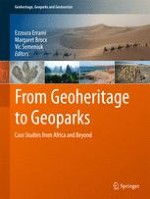2015 | OriginalPaper | Buchkapitel
Microscale Geology and Micropalaeontology of the Becher Point Cuspate Foreland, Australia: Significant Geoheritage Values at the Smallest Scale—A Model for Identifying Similar Features in Geosites and Geoparks
verfasst von : V. Semeniuk, C. A. Semeniuk, F. Trend, M. Brocx
Erschienen in: From Geoheritage to Geoparks
Aktivieren Sie unsere intelligente Suche, um passende Fachinhalte oder Patente zu finden.
Wählen Sie Textabschnitte aus um mit Künstlicher Intelligenz passenden Patente zu finden. powered by
Markieren Sie Textabschnitte, um KI-gestützt weitere passende Inhalte zu finden. powered by
